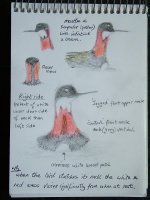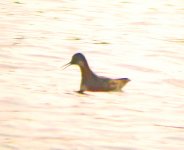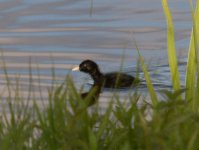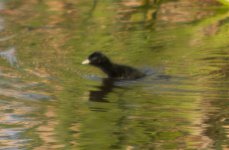Gavo
Well-known member
Cheers Brian - at the moment its a joint record with both birds present for 4 days but who knows what tomorrow may bring. Amazed it hasnt cleared out with several relatively clear nights.
Phil
Like John said in an earlier post, the habitat must suit Phaloropes, ecology is a fine balance and it seems the correct balance is being found at the flashes for Phalaloropes, the salinity of the water must produce the perfect mix of prey for them, if not they certainly would'nt return year after year, and it would seem this year with the weather we are having has produced an abundance of food for the Phaloropes, hence their prolonged stay.










